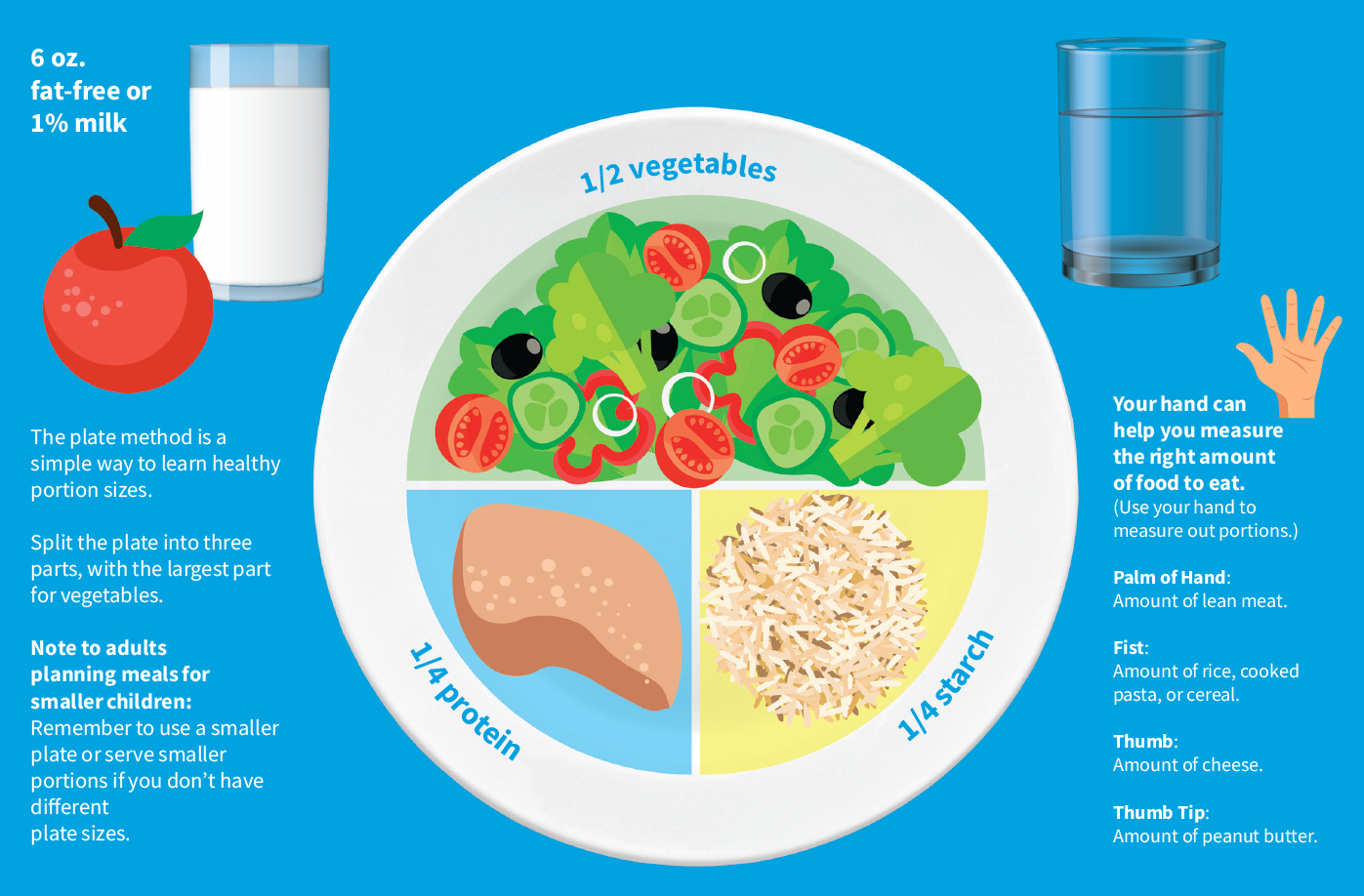Nutrition information
Nutrition Recommendations for Acid-Reflux
- Avoid tobacco use
- Avoid chewing gum and hard candy. They increase the amount of swallowed air which, leads to belching and reflux. Mint flavors can also increase reflux.
- Do not lie down immediately after eating. Avoid late evening snacks. Wait two hours after meals before laying down.
- Avoid tight clothing and bending over after eating.
- Eat small, frequent portions of food and snack if needed.
- Excess weight can lead to additional internal pressure and in turn can cause acid reflux- weight loss can help reduce these symptoms.
- Elevate the head of the bed six to eight inches to prevent reflux when sleeping. Extra pillows, by themselves, are not very helpful.
- The following foods aggravate acid reflux, and should be avoided:
- fatty or fried foods
- peppermint and spearmint
- Caffeinated beverages
- alcohol
- whole milk
- hydrogenated oils
- chocolate
- creamed foods or soups
- most fast foods
- The following foods irritate an inflamed lower esophagus and may need to be limited or avoided:
-
- citrus fruits and juices (grapefruit, orange, pineapple, tomato)
- coffee (regular and decaffeinated)
- caffeinated soft drinks
- tea
- other caffeinated beverages
- Spicy or acidic foods may not be tolerated by some individuals.
Food Groups |
||
Group |
Recommend |
Avoid |
| Milk or milk products | skim, 1% or 2% low-fat milk; low-fat or fat-free yogurt | whole milk (4%), chocolate milk |
| Vegetables | all other vegetables | fried or creamy style vegetables*, tomatoes |
| Fruits | Apples (skin removed), berries, melons, bananas, peaches, pears | citrus*: such as oranges, grapefruit, pineapple |
| Breads & grains | all those made with low-fat content | any prepared with whole milk or high-fat ingredients (butter) |
| Meat, meat substitutes | low-fat meat, chicken, fish, turkey | cold cuts, sausage, bacon, fatty meat, chicken fat/skin |
| Fat, oils | small amounts of olive oil, avocado oil | all animal or vegetable oils |
| Sweets & desserts | all items made with no or low fat (less than or equal to 3 g fat/serving) | chocolate, desserts made with oils and/or fats |
| Beverages | decaffeinated, non-mint herbal tea; juices (except citrus); water | alcohol, coffee (regular or decaffeinated), carbonated beverages, tea, mint tea |
| Soups | fat-free or low-fat broth based | cream-based soups |
Make Healthier Choices While Eating Out
Food choices away from home are important to your health and weight since many of us are eating more meals away from home. Fortunately, making healthful and delicious choices in restaurants is also easier today. Restaurants of all types are responding to customers’ desires with more options in portion sizes, preparation methods and menu items. For example, restaurants are offering:
- More appetizer-size portions of popular entrées
- More baked and broiled choices in meat, fish and poultry
- More fruit and vegetable side orders to substitute for fries
Before You Go:
- Make sure not to skip any meals on a day that you may be going out to eat, especially breakfast
- Some restaurants enable you to view the menu before going out on their website, this can help you to be prepared to stay on track while out to eat
- Make sure that your dining partners are aware of your health goals
Right-Size Your Serving Sizes
Becoming sensible about serving sizes is an important way to maintain a healthy weight, and it is good for your wallet too.
- Instead of a large entrée, order an appetizer and a leafy green salad or choose two appetizers for a meal.
- Start with a small serving such as a cup of soup, a junior burger or a small order of fries. If you are still hungry, order something else.
- Indulge your inner child: order a kid's meal at a fast-food restaurant. Many now offer a choice of low-fat milk and fruits or vegetables instead of fries.
- Savor your steak twice as much. Eat half at the restaurant, then take the other half home to enjoy it sliced onto a green salad or as a sandwich on whole-grain bread.
- Ask for a to-go box as soon as your meal is served. Put half your food into the container for a second meal. That's two meals for the price of one.
- Share from start to finish. Order one appetizer for the whole table and then order one dessert with multiple forks. Sometimes, just a bite or two is perfect.
- Share an entrée. You can ask your server to split the meal in the kitchen or divide it up yourselves at the table.
Grocery Shopping List for Diabetes
|
Grains Whole wheat or Whole grain bread Whole grain cereal Oats (Old fashioned or steel cut) Whole grain or whole wheat pasta Wheat germ Bran Barley Quinoa Brown Rice Rye Bread Farro Popcorn Bulgur wheat |
Vegetables Onions Garlic Broccoli Cauliflower Carrots Sweet potatoes Mushrooms String beans Romaine Lettuce, Kale, spinach, Collard Greens, Bok Choy, Arugula Radish Zucchini Butternut squash or spaghetti squash Tomatoes Bell Pepper Cucumber Herbs Eggplant |
|
Beans and Legumes Lentils Black beans Black eyed peas Kidney Beans Pinto Beans Cannellini Beans Navy Beans Soybeans Lima Beans
|
Fruits *try to limit your intake of dried fruits, fruit in syrup or tropical fruits* Blueberries, Blackberries, Strawberries, Raspberries Green apples/Red apples Plums Peaches Oranges Lemons/Limes Avocado
Tropical Fruits (Limit to 1 serv per day) Banana or Plantain Pineapple Mango Papaya Guava |
|
Dairy Eggs Low fat Milk Unsweetened: Soy Milk, Almond milk, Oat Milk, Coconut milk Cottage Cheese Plain or low sugar (less than 10g sugar) yogurt or Greek yogurt Part-skim cheese sticks or any cheese Butter/Margarine
|
Meats, Poultry, Seafood Lean beef (sirloin steak, London Broil, Filet mignon, top round, flank steak) Ground beef 90 % lean (or above) Ground chicken or turkey (90 % lean or above) Tuna in a can Fish: salmon, cod, tilapia, flounder, halibut, shrimp, clams, mussels, scallops Chicken (all cuts * remove skin for less fat) Lean pork: pork tenderloin, center cut pork chops (fat trimmed) · Try turkey bacon or chicken sausage for a low fat twist! |
|
Beverages Coffee Tea Seltzer Water Diet soda Crystal light Beverages labeled “sugar free” |
Condiments: Mustard Hot Sauce Olive oil/Canola Oil Salad dressings (below 10 g sugar) Ketchup (contains sugar, so portion it out!) Guacamole Sauerkraut Lemon juice Sugar free seasonings Vinegars Low Sugar BBQ sauce (less than 10g sugar per serv) Sugar Substitutes: Splenda, sweet and low, stevia, Equal, monkfruit
|
|
Frozen Sugar free ice pops Sugar free ice cream Low-sugar fudge/ice cream bars (below 10 g sugar) Frozen vegetables Whip Cream Frozen fruits
|
Snacks: Sugar free pudding or Jello Graham crackers Rice cakes Air popped popcorn Natural peanut butter Low sugar yogurt Nuts: almonds, walnuts, cashews, pistachios, peanuts, brazil nuts Part-skim cheese sticks |
My Plate Planner
A Healthy Meal Tastes Great


5
or more servings of fruits and vegetables per day.

2
hours or less of watching TV, playing video games, or using computers per day.

1
hour of physical activity or exercise per day.

0
sweetened beverages (soda or juice) per day.
What to Choose for Your Healthy Plate
Lean Protein:
3 to 5 ounces
(fits in the palm of your hand)
Broiled, grilled, or sautéed:
• Fish – flounder, tilapia, cod, shrimp, haddock, tuna
• Skinless poultry – chicken or turkey
• Lean pork – pork loin, tenderloin, center loin, ham
• Lean beef – eye round, sirloin tip, top round
• Ground turkey, chicken, or beef – less than 3 grams of fat
• 1 whole egg, 2-3 egg whites, or egg substitute
Fruit:
½ or 1 cup
(size of a tennis ball)
• Apples, pears, peaches, tangerines, plums
• Strawberries, blackberries, blueberries,
cherries
• Melon, pineapple, kiwi
• Banana
• Grapes
• Watermelon
• Mango
• Papaya
Starch:
¼ plate
• Corn, peas, frozen mixed vegetables
• Brown rice, whole wheat couscous, quinoa
• Barley, farro, teff
• Roasted or baked potatoes (white, yellow, red, sweet potato)
• Whole-grain pasta
• Acorn or butternut squash
• Whole-wheat bread
• Polenta
• Plain oatmeal
Vegetables:
Eat as much as you want, o
until you feel full.
• Broccoli, cauliflower
• Carrots, parsnips
• Artichokes
• Eggplant
• Spinach, romaine lettuce, arugula, kale, cabbage, collards, watercress
• Tomatoes
• Green beans
• Mushrooms, onions, green onions
• Radishes
• Cucumbers
• Zucchini
Beverages:
• Water, fruit-infused waters, unsweetened iced teas, coffee, hot tea, seltzer, diluted juices, 1% milk, or unsweetened dairy alternatives
(almond, rice, oat milks)
• Choose beverages with less than 4 grams of sugar per serving
Healthy Fats:
1 Tablespoon
(size of your thumb)
• Olive, avocado, canola oils
• Nuts (almonds, walnuts, cashews)
• Natural or reduced fat peanut butter
• Hummus
• Avocado
• Ground flaxseeds, chia seeds
• Low fat mayo, salad dressings with 5-6 ingredients